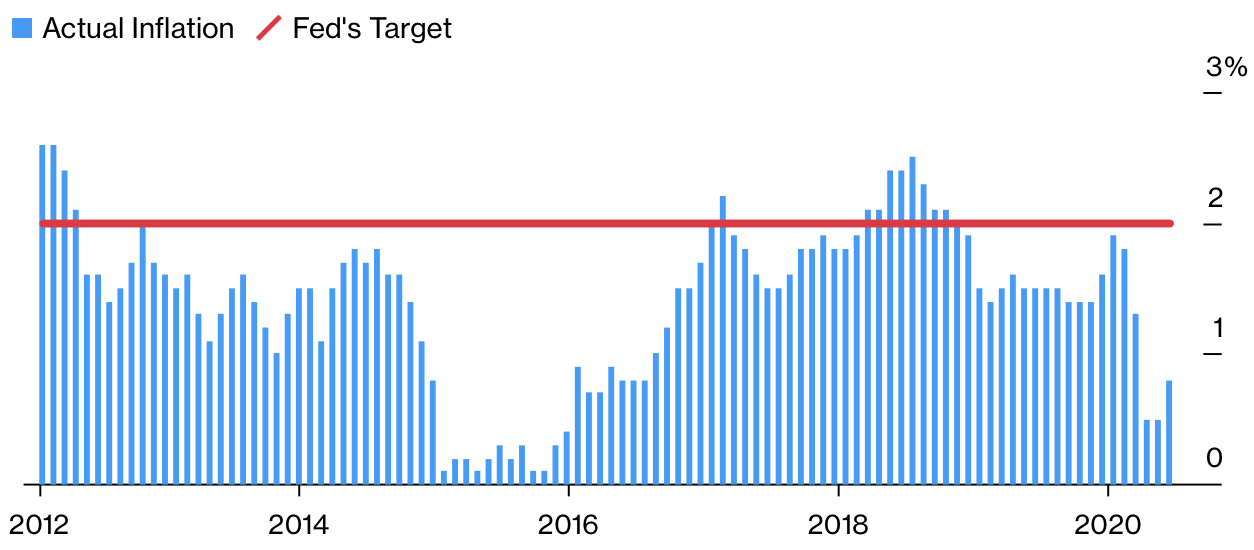The U.S. Federal Reserve (Fed) has created a new policy for interest rates and inflation for the coming years. The adjustment will see interest rates remaining at zero with a softer stance on inflation.
In the immediate aftermath of the closures from COVID-19, the Fed dropped benchmark rates to zero. Rates have remained at that level since, but some have suggested the recovery could stir the Fed to raise rates.
Fed Chairman Jerome Powell put those fears to rest, suggesting that zero-level interest rates would remain for the foreseeable future. He told reporters that the Fed isn’t “even thinking about thinking about raising rates.”
This situation will certainly last throughout next year, and could even extend into 2022. Any change would depend largely on the state of the economic recovery after the coronavirus has subsided.
SponsoredNew and Improved Fed?
The response to the crisis has changed the way the Fed approaches the economy. Previously, a very sensitive hand was used when dealing with inflation and benchmark rates. The current changes move that mark.
The Fed is seeking a minimum of 2% inflation, but the economy has remained persistently under that number. The last time inflation was 2% or greater was in November of 2018, and that event only covered the summer months of the year.

The new approach will allow for inflation of at least 2%, and is even comfortable with overshooting that mark. Powell explained that a long term inflation rate of 2% could allow for higher rates to offset a period of lower rates.
Trial and Error
The new approach reflects the Fed’s willingness to test the economy and its response to changes. In particular, a new approach to the way inflation and rates are handled remains uncharted waters.
However, the Fed’s approach reflects an overall bullish sentiment, as the stock market recovers. Much of that positive response appears linked to previous stimuli, as Treasury Secretary Steven Mnuchin previously said, the economy is ‘addicted’ to additional Treasury funds.
This activity has been coupled with large-scale buying of Treasuries and Mortgage-backed Securities. Both offer a simple way to inject liquidity into the market. Inflationary fears that would have constrained those actions now appear moderately positive.

